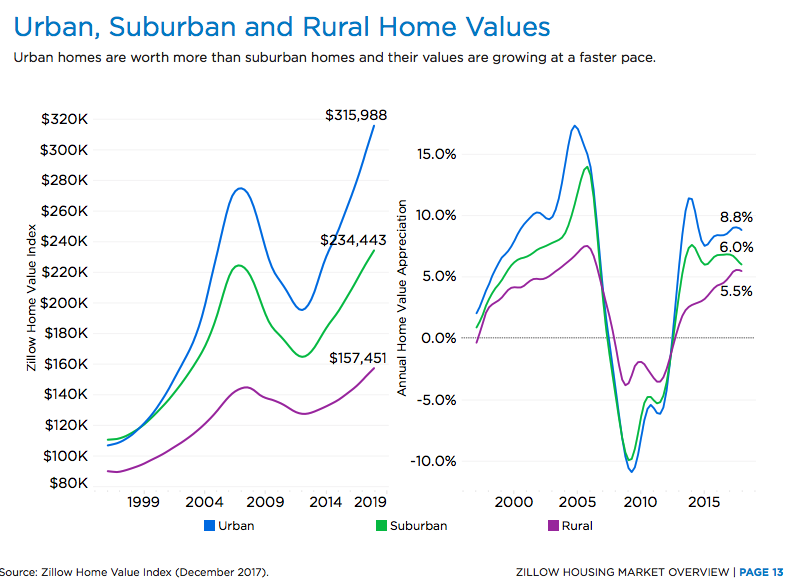Zillow’s data tracking prices of tens of millions of US homes adds further confirmation to the Dow of Cities
For some time, we’ve been talking about the Dow of Cities: the notion that the price premium that urban homes command over suburban ones is a market indicator of the growing preference of Americans for city living. We’ve marshaled data from academic studies using decades of Census data, from an investment advisory service‘s tabulation of the Case-Shiller-Weiss home price index, from rental market statistics and today, we take a look at Zillow’s big data on US home price trends.
Zillow tracks data on home sales across the country, and has developed a sophisticated statistical model for estimating prices of virtually all US houses. They publish their estimates on a monthly basis, and also produce quarterly outlooks on the US housing market based on their statistical analyses. We were particularly struck by a chart in the most recently quarterly outlook document.
They’ve broken down US home sales between urban, suburban and rural markets, and shown both the level of home prices (the left hand chart) and the change in home prices (the right hand chart).
Zillow’s caption pretty much says it all: Urban homes (blue) are worth more than suburban homes (green) and their values are growing at a faster pace. Today, the typical urban home sells at an $80,000 premium to the typical suburban home. As recently as 2000, the typical suburban home commanded a higher price. And city homes are widening the gap. Though values fell pretty much across the board in the wake of the housing bubble, city homes have appreciated faster in recent years, most recently up 8.8% compared to a 6.0 percent increase for suburban homes.
What this large and growing price differential signals is that Americans attach an increasingly greater value to urban living than they did just five or fifteen years ago. The urban price differential is a measurable, market-driven indicator of the value we attach to urban living. And as we’ve argued at City Observatory, it’s also strong evidence that we’re facing a shortage of cities. A key part of the reason city prices are rising is that we’re not building housing fast enough in the urban locations that are in great demand. (It’s also a market message that there’s more demand for great urban neighborhoods, if we can figure out how to make more of them).


